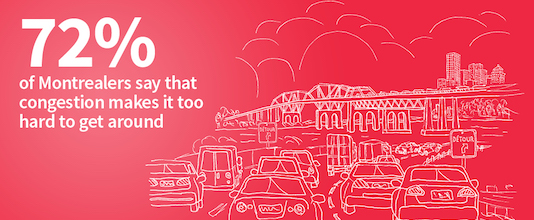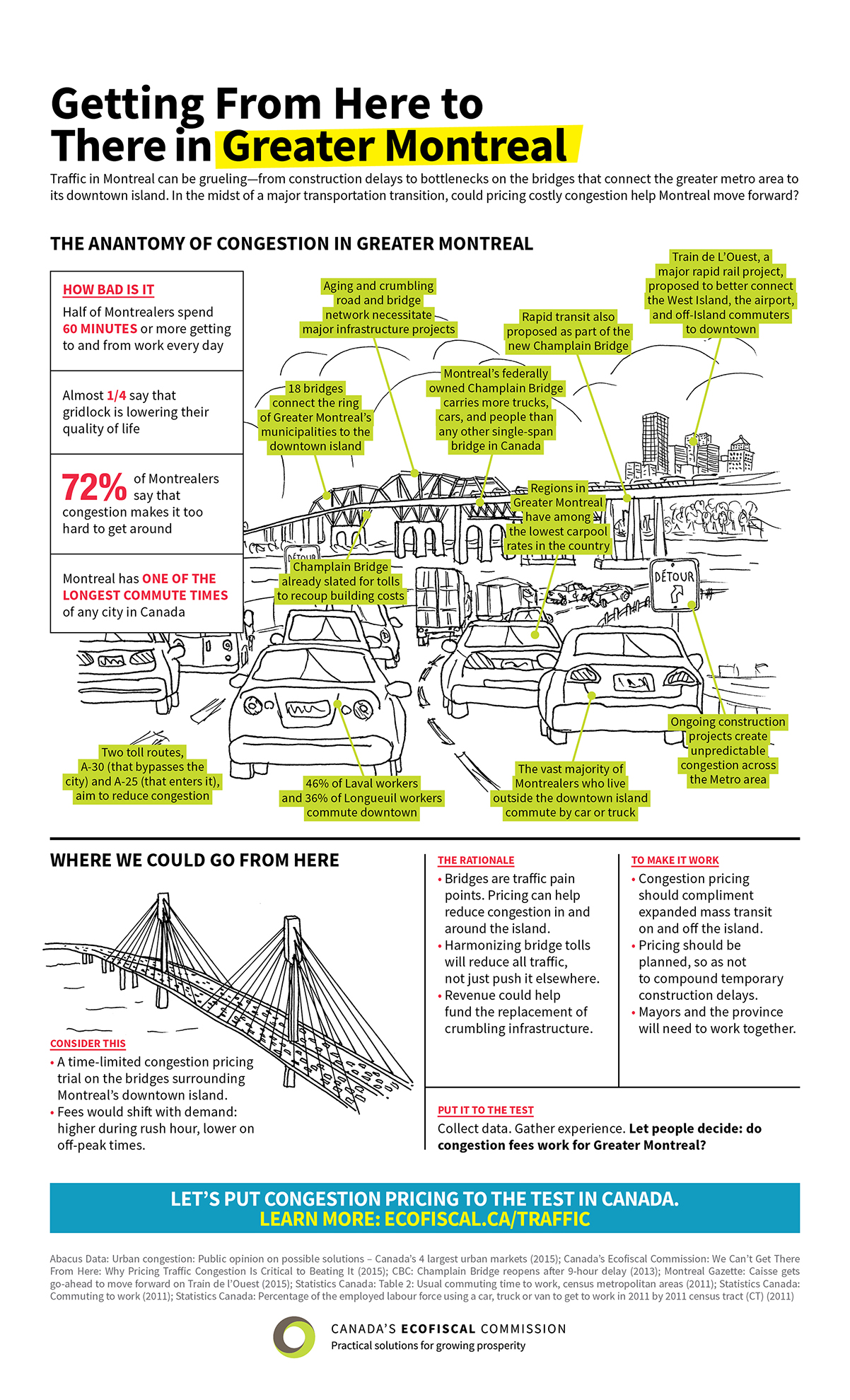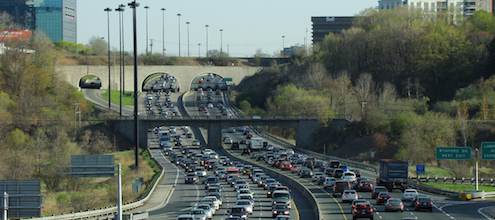
Getting traffic moving in Montreal
On November 2nd, the Ecofiscal Commission launched its latest report We Can’t Get There from Here: Why Pricing Congestion is Critical to Beating It. The report explains how we can’t simply build our way out of congestion; we also need to consider incentives. The report’s central recommendation is that Canada’s four largest cities run congestion pricing pilot projects, supported by all levels of government, to generate the practical knowledge and data necessary to include pricing in our long-term urban mobility plans. But what does that mean for Montreal?
What does traffic look like in Montreal?
Before we dive into the specific Montreal idea for a pilot project that we proposed, let’s review the traffic situation on the ground. To do that, we have a great infographic. One of the notable stats included is the fact that 72% of Montrealers say that congestion makes it too hard to get around. Another is that half of Montrealers spend 60 minutes or more getting to and from work each day.
 Of course, the experience of sitting in traffic speaks for itself. Our chair, Chris Ragan, explored Calgary’s traffic first hand with journalist Jeff Yates. Check out the video of their experience stuck in traffic in Montreal.
Of course, the experience of sitting in traffic speaks for itself. Our chair, Chris Ragan, explored Calgary’s traffic first hand with journalist Jeff Yates. Check out the video of their experience stuck in traffic in Montreal.
What could congestion pricing look like in Montreal?
Greater Montreal’s relatively widespread congestion is characterized by extensive commuting to and from the central island. This natural cordon (the island) as well as an existing toll on a bridge on Autoroute 25 and potentially a new toll on the federally-owned Champlain Bridge, make zone-based pricing a practical option. This would involve applying harmonized pricing on all bridges connecting the island, reducing congestion into, out of, and around the greater region. Targeting the pricing policy to congested areas via the limited number of the Island’s access points makes zone-based pricing more straightforward than it would be in other Canadian cities like Toronto or Calgary. Plus, Greater Montreal is less polycentric than Metro Vancouver, with the downtown core a major hub for business. Significant traffic comes from commuters driving in from off-island. Customizing breadth of policy to this geographic context could thus target congestion zones with relatively low administrative costs. The most effective way to do this would be to use fees that vary by time of day, or even dynamically in response to demand.
In the end, the main point is that it’s time for a serious conversation about expanding congestion pricing in Montreal. Let’s keep the discussion moving forward.
Read the Report: We Can't Get There from Here




Comments are closed.